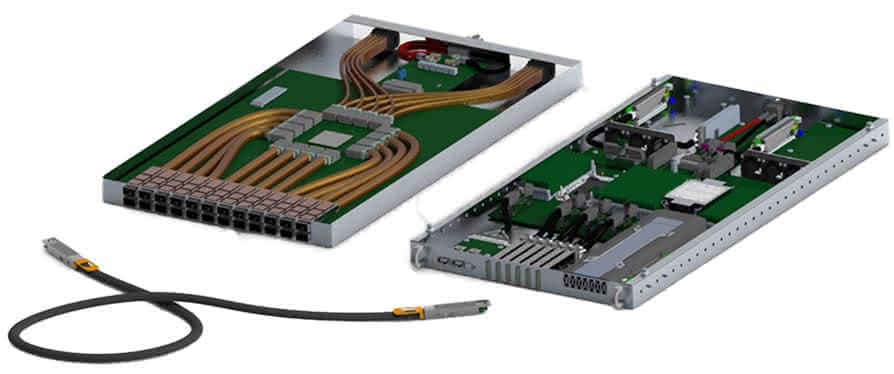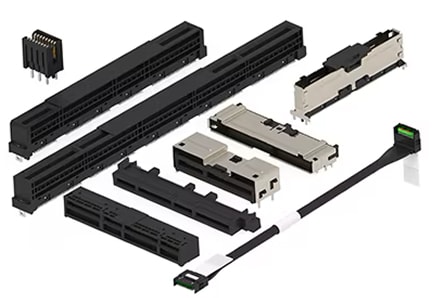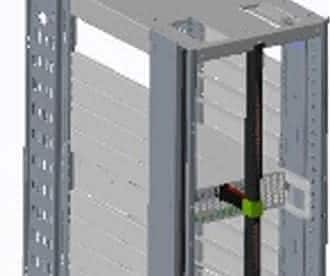Empowering AI & Data Center Connectivity For Next-Gen Speed, Efficiency, and Reliability
AI Data Center Portfolio
Connectivity Solutions for AI Data Centers
Click on any of our solutions to learn more.

Power Infrastructure Solutions
Click on any of our solutions to learn more.
Our product portfolio
- High-Speed I/O Cables & Connectors
- Backplane Connectors & Cable Assemblies
- Over-the-Board Connectors & Cable Solutions
- Power Connectors & Cable Solutions
- Internal Cabled Interconnects
- IC & Memory Sockets
- 112G Portfolio Solutions
- 224G Portfolio Solutions
- Open Compute Project (OCP) Solutions
- Optical Solutions
Latest Insights and Innovations

The Evolution of Data Centers and the Future of Cooling and Connectivity
This trend paper explores how data centers are evolving to meet increasing power and cooling demands, with a focus on new design approaches and connectivity solutions.
Read Now
Open Compute Project (OCP) Power Distribution Solutions
TE’s OCP power solutions offering.
Read Now
AdrenaLINE 224G Product Portfolio
Consisting of 224G product solutions including near-chip connectors, cabled backplane, cabled I/O connectors, micro LGA socket, and 224G in-house produced cable, TE AdrenaLINE is your all-encompassing solution for next generation operations capable of providing end-to-end connectivity where it is needed the most.
Read Now
A More Sustainable Data Center
With the rise of generative artificial intelligence (AI), data centers have become a growing consumer of electricity.
Read Now
Thermal Performance
Today's design challenge includes increasing computing performance in higher-power data racks while managing thermal performance.
Read NowSubscribe to our Newsletter
Get updates from us on latest new products, insight articles, events and activities.
Thank you!
The personal information you provide will be transferred to and processed by TE Connectivity in the U.S. to provide you with the requested information or services. Please read our privacy policy for more details.
Socket and Mating Connectors
- High-density, high-speed signal launch from the source
- Near-chip connector utilizing uLGA socket technology
- 224G signal integrity performance
- Customization available

Cabled Backplane Connectors
- Enables all-to-all communication between AI Chips
- Hermaphroditic mating interface for 224G performance
- Operates at 224G PAM-4 data rates with 92 Ohm impedance
- Mating force required including 1.0 N/DP, with a durability of 200 cycles
- Optimized for 26 to 32 AWG cabled backplane architectures

- Reliable, scalable & customizable end-to-end power solution
- Highly versatile portfolio meeting Open Rack v3 (Orv3) standards
- Offers liquid cooling capabilities
- Supports OCP and custom infrastructures
- Global footprint to ensure supply chain resilience

Cabled I/O Connectors
- With twinax copper cables connecting to near-chip connectors
- Supports industry standard form factors like OSFP & QSFP-DD
- Integrated connector and cage press onto the host board
- Advanced thermal management & heat dissipation

Internal Cabled Interconnects
- Flexible, robust, providing optimal signal integrity
- Enable space saving and lowering design costs
- Rated up to 56G PAM-4 (112G) speeds with PCIe Gen 6 & beyond capability
- Various sizing & configuration options

- High-speed solutions to connect devices to the switch
- Greater cable flexibility and longer reach
- Reduced power & latency
- Passive & active, copper & optical options available

- Newly expanded portfolio
- Offer 200G/400G/800G, with 1.6T solutions in development
- Support distances from <100m to 2km
- Reliable performance with great Bit Error Ratio (BER)
- Flexible integration, enabling improved network configuration

- Reliable AC power with board-mount connectors and panel-mount assemblies
- Compliant with ORvX and HPR specifications
- Customizable AC power whips delivering pre-terminated reconfigurable power

- High-current, durable power distribution with engineered vertical busbars
- Versatile cooling options, including air, liquid and immersion
- Supports rack-to-rack power distribution for advanced rack architectures

- Efficient AC-to-DC PSUs including MULTI-BEAM and Card Edge connectors
- Handles power loads using high-current output connectors to the busbar
- Offers custom-engineered cabled and busbar assembly solutions

- Industry-standard creation of ORv3 IT Gear, and adoption as part of the Open Compute Project (OCP)
- Support high-current applications and 12V solutions
- Simplified routing in dense racks with flexible cable exit designs

- High reliability power distribution for compute, server, and networking
- Maximizes space-efficiency and performance with compact, high-density designs
- Comprehensive portfolio of connector types for advanced power solutions




